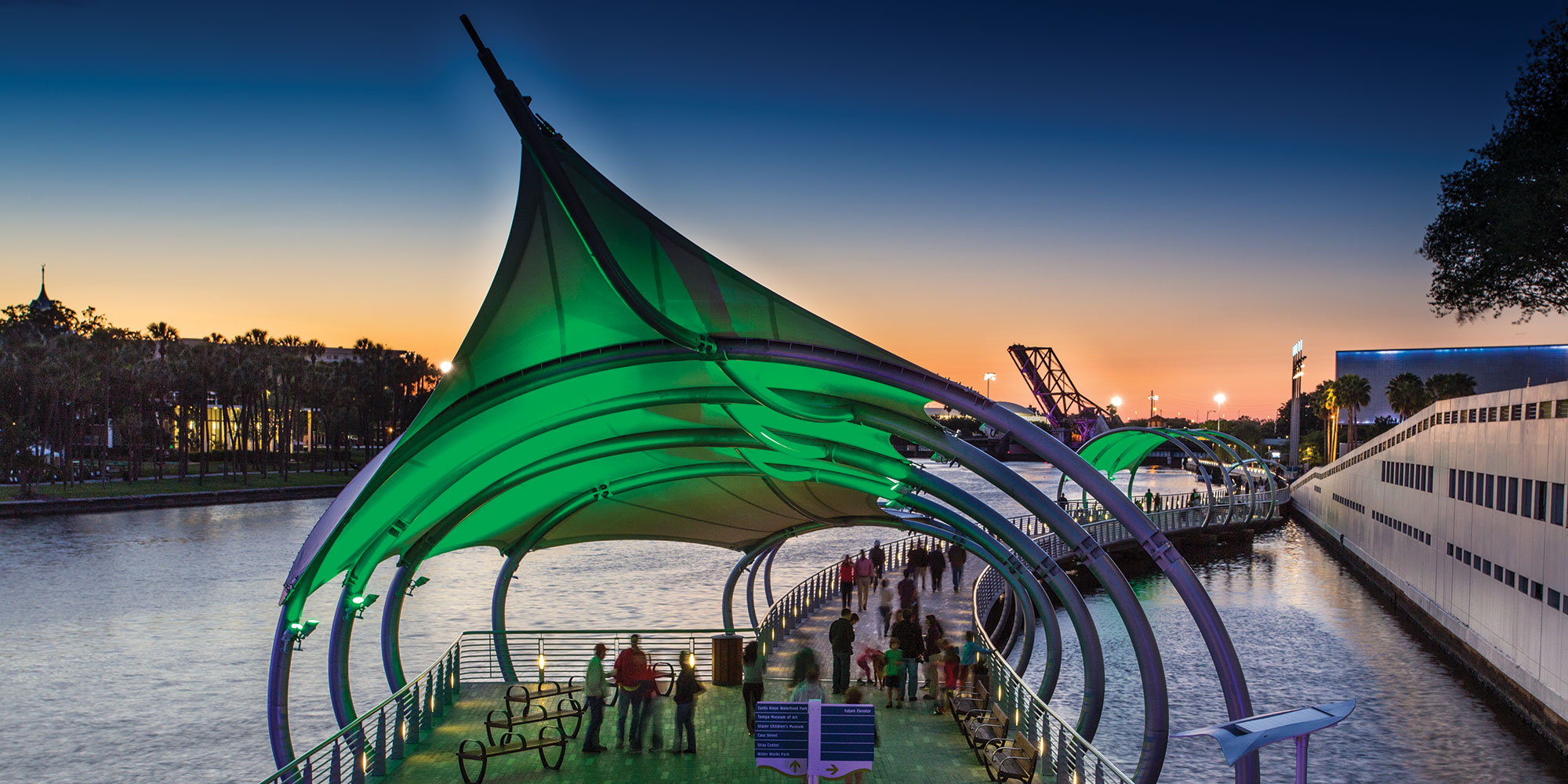Originally published January 2018. Updated March 16, 2020.
People like to be near bodies of water. They like to linger over dinner and drinks at waterside tables. They run, walk and bike alongside its edge whenever they can. They enjoy paddling, boating and fishing. They love the mere sight of water.
But until the late 2000s, visitors to Downtown Tampa didn’t have these options. For years, Tampa’s expansive downtown waterfront sat undeveloped and neglected. “A dump,” as former Mayor Bob Buckhorn refers to it.
“We had turned our back on the riverfront for decades,” he says.
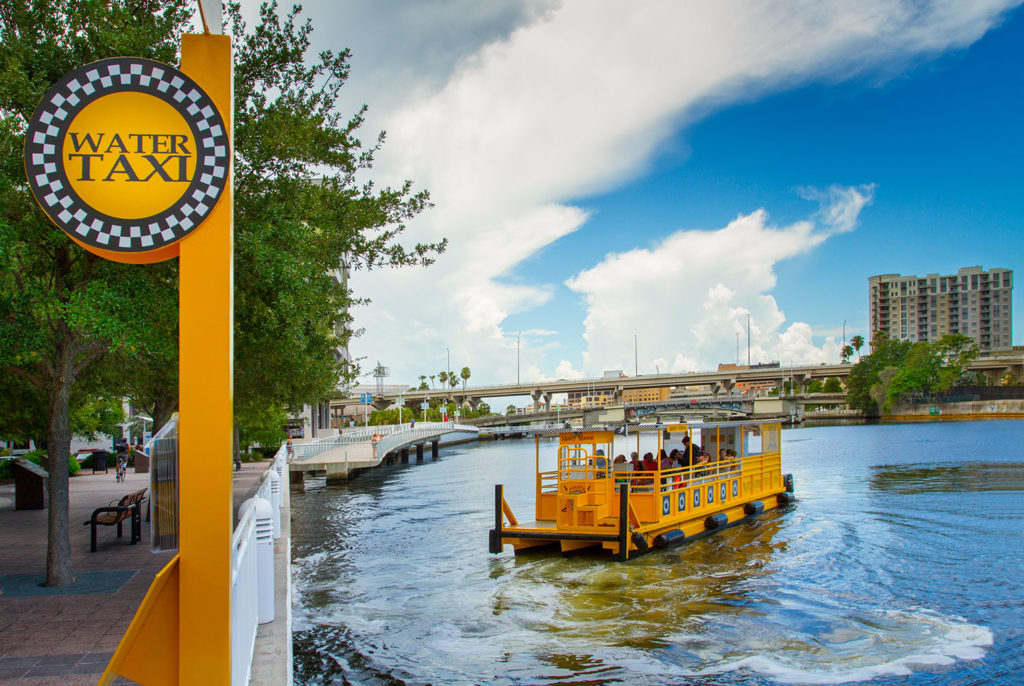
Troy Manthey, president of Pirate Water Taxi and Yacht StarShip, says, “We thought we would do water taxis in 2006, but the full connectivity in downtown wasn’t there, we didn’t have attractions and things for people to do. You can’t have a water taxi to nowhere.”
Now, restaurants are opening their doors along the Hillsborough River, residential and office buildings are rising on its shores, yellow water taxis glide over its waves, and people exercise or take a casual stroll along the waterfront at all times of every day. This shift in the makeup and character of Downtown Tampa can be traced directly back to the construction and recent completion of the Tampa Riverwalk.
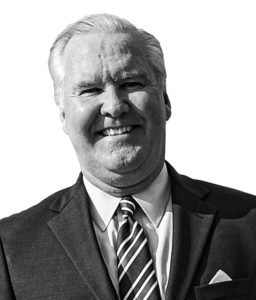
“By all measures, it has completely transformed our city, and it may be one of the single-most important events that has occurred in our community in probably the last 50 years,” Buckhorn says.
Today, that waterfront walkway is crucial to the pitch people like Buckhorn and Bob McDonaugh, the city’s economic opportunity administrator, make to real estate developers, corporations and other private entities considering a major investment in Tampa.
“A lot of real estate developers have seen the Riverwalk as a tremendous asset (for their downtown projects),” McDonaugh says. “I would say it was a deciding factor (in their decision to move forward).”
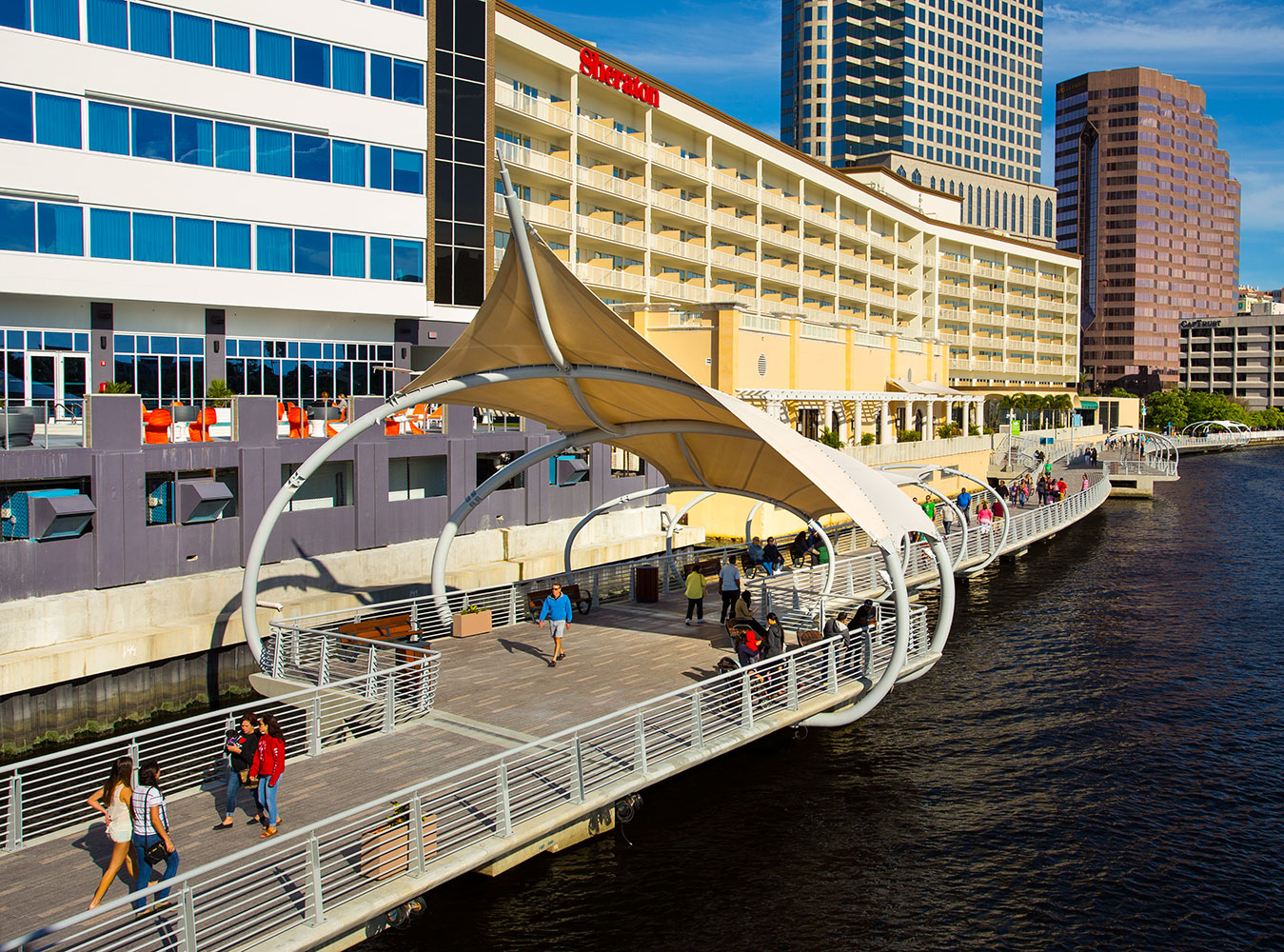
How It Came To Be
How did one 2.6–mile-long pathway come to play such an important role in one of America’s fastest-growing cities? As Buckhorn points out, it has been six mayors and more than 40 years in the making. The Tampa Riverwalk, or at least the idea of it, has existed since Mayor Bill Poe first proposed the concept in 1975 and the first waterside planks were laid near the original Curtis Hixon Park the following year. For the next few decades, it grew in fits and starts. The Tampa Bay Performing Arts Center (now the Straz Center for the Performing Arts) included a small waterfront walkway when it opened in 1987, as did the Tampa Convention Center, Marriott Waterside, Cotanchobee Fort Brooke Park, USF Park and MacDill Park when they opened along the waterfront throughout the 1990s and early 2000s.
It took a collaborative effort between the private sector, the newly formed nonprofit Friends of the Riverwalk and local government, led by then-Mayor Pam Iorio, to develop a master plan for the connection of the path, beginning in 2005.
“We needed to connect all of the assets that we had in Tampa in a way that people could easily get to them,” Iorio says. “We had museums and parks but no way to get to them and really enjoy the waterfront. We needed to open the river to the people.”

By 2010, with the walkway almost fully connected and the revitalized Curtis Hixon Waterfront Park completed under Iorio’s administration, the vision had become clear. By 2012, the Buckhorn administration acquired a $10.9 million Transportation Investment Generating Economic Recovery (TIGER) grant from the federal government. By 2016, the extension to Tampa Heights and the final overwater connection underneath the Kennedy Boulevard bridge were completed, realizing the Riverwalk vision.
“I think the Riverwalk has met, and to some extent exceeded, what we thought would occur,” Iorio says. “It’s absolutely brought downtown to life.”
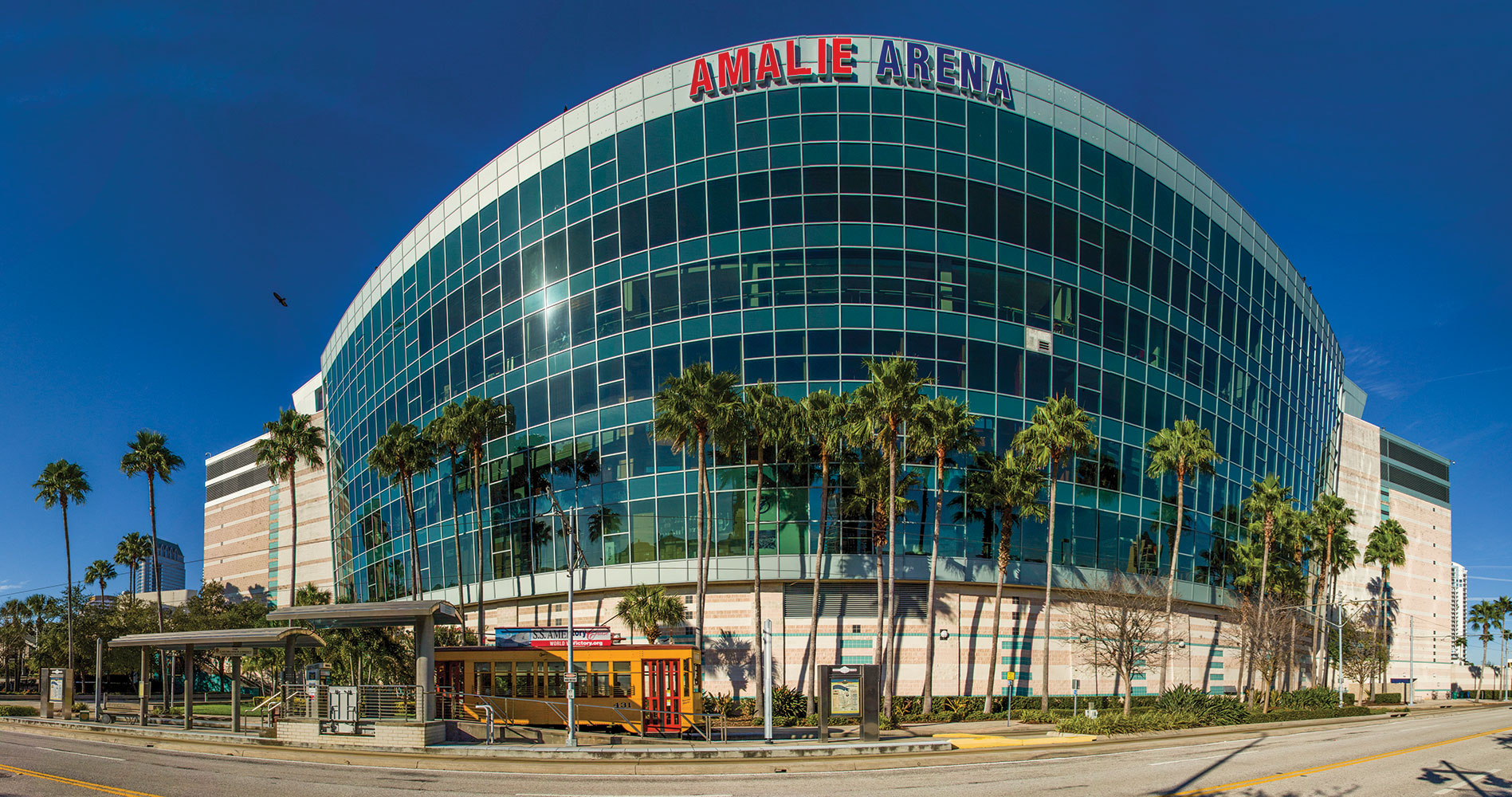
Connecting Parks, Cultural and Entertainment Venues
A key part of the downtown waterfront’s activation was the linking of the area’s major cultural and entertainment venues, including the Tampa Bay History Center (the path’s starting point), Amalie Arena, the Tampa Museum of Art and the Straz Center for the Performing Arts. Manny Leto, the History Center’s marketing director, says the Riverwalk has made it easier than ever to access these locations.
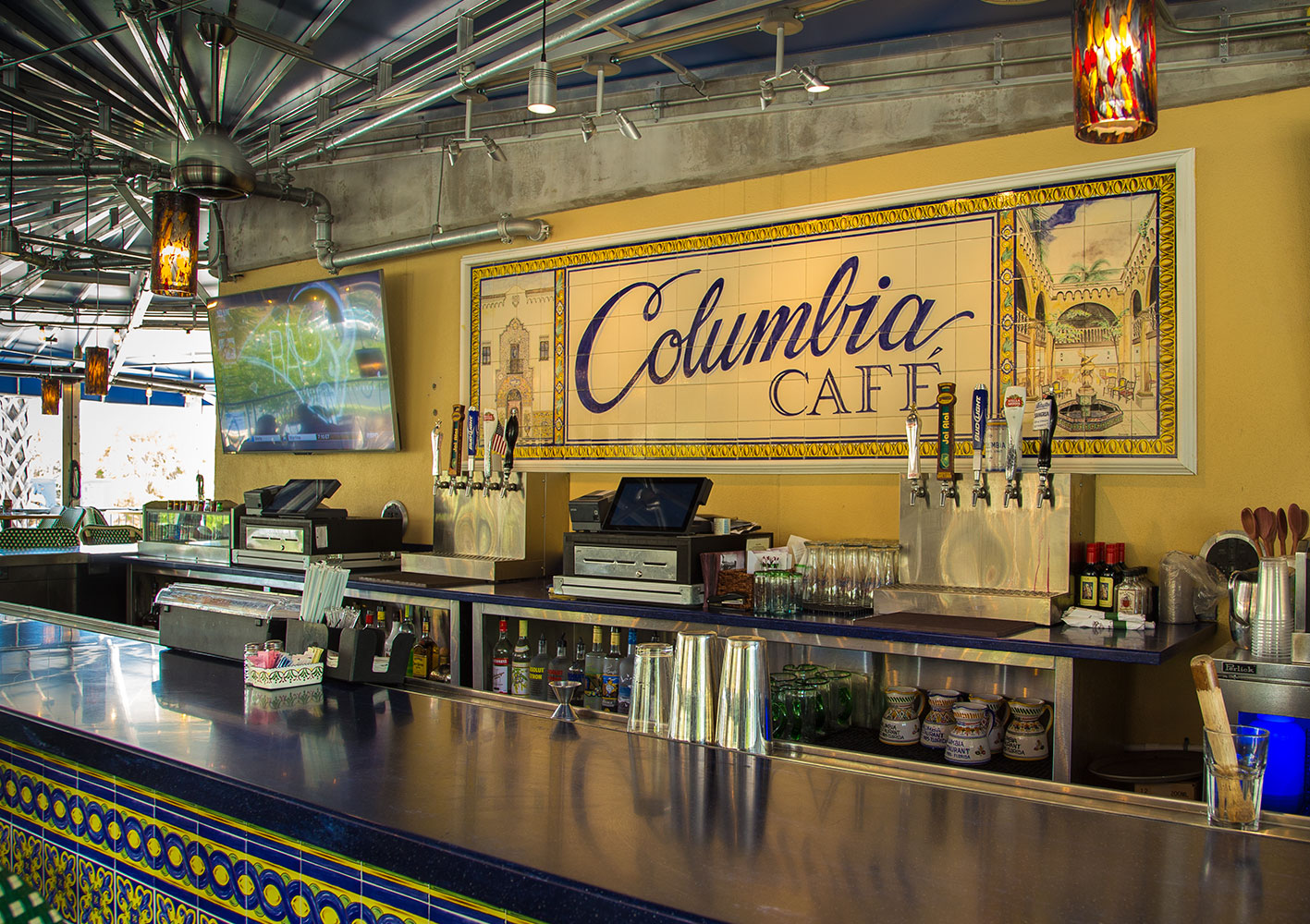
“Since the completion of the Riverwalk and the extension all the way to Tampa Heights, we have definitely seen an uptick in visitors to both the History Center and the Columbia Café,” he says. “With the addition of other museums, parks and restaurants along the path, it means tourists and visitors can experience Downtown Tampa, the Channel District, even Ybor City, without ever having to get in a car. It’s a big step forward for the city.”
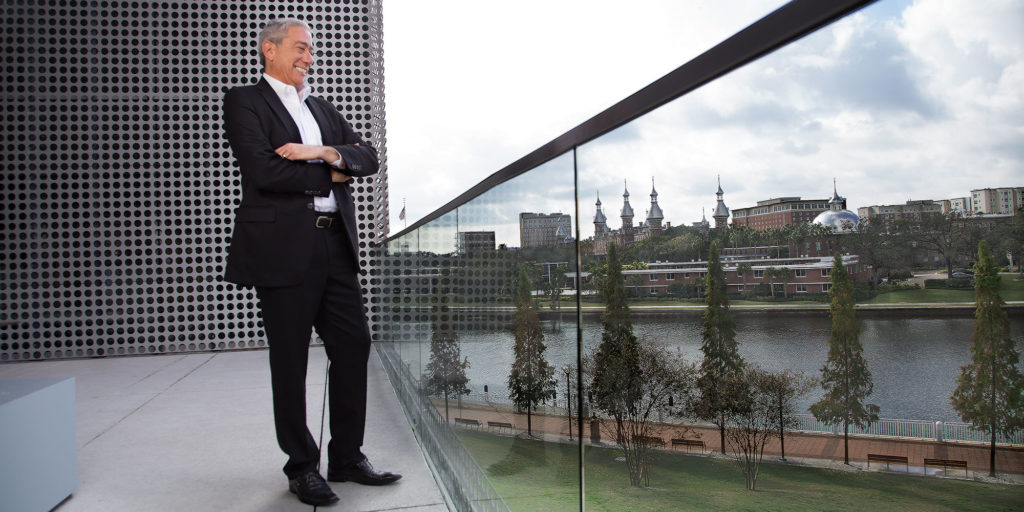
Michael Tomor, Ph.D., the executive director of the Tampa Museum of Art, says the trail has helped the waterfront museum achieve its goal of making art accessible to the public. “Due to its unique footprint and architecture, the museum has had the opportunity to consider the installation of art outside of the museum building, [which has] been overwhelmingly embraced by those along the Riverwalk,” he says. “It has led to a tremendous success for the museum. Bringing art to the public on their own terms, and at their own pace and leisure, is important to the museum and demonstrates its commitment to providing excellence and access to art for free and to all.”
Toward the thoroughfare’s north end, the Straz Center for the Performing Arts is planning a renovation to accommodate its rapid growth that includes the construction of an outdoor terrace extending to the Riverwalk and what Straz president and CEO Judy Lisi calls an “iconic” art feature in the river itself.
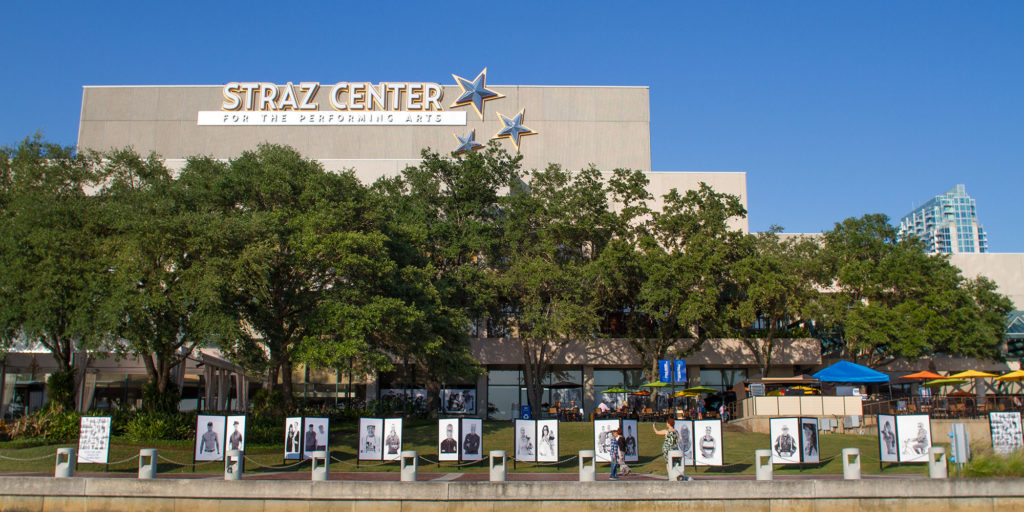
“One of the major operating principles of the Straz Center’s master plan is to relate to the river and the Riverwalk because that’s Tampa’s big statement,” Lisi said in a June 2017 interview with TAMPA Magazine.
A key part of that statement sits nearly smack in the middle of the 2.6 mile path. Curtis Hixon Waterfront Park has become one of downtown’s biggest draws, hosting events ranging from concerts and food festivals to the Winter Village’s outdoor ice rink and attracting exercisers and families alike.
“We thought that in redoing the park, putting the Tampa Museum of Art and the Glazer Children’s Museum there, and adding the Riverwalk, it would be well used,” former Mayor Iorio says. “Now I’m told over 600,000 people a year visit Curtis Hixon Waterfront Park. It is truly the focal point of downtown, and it’s something I’m extraordinarily proud of.”

“Mayor Iorio’s decision to do Curtis Hixon Waterfront Park and the two museums next to that really gave the city a front lawn that was open to everybody,” Buckhorn adds. “I think it opened the community’s eyes because, for the first time, the waterfront was wide open. Once that happened, people started to become believers [in downtown], and we were too far down the road to stop.”

All the components necessary for a thriving major city are now in place and connected along the Riverwalk. Now that the public has access to the water surrounding downtown, Tampa is officially open for business.
As The Riverwalk’s Completion Neared, Private Investment Soon Followed
Troy Manthey was one of the first to make an investment in Tampa’s growing waterfront. He moved his company, Yacht StarShip, to the city’s Channelside in 2001 from Biloxi, Mississippi, after getting a glimpse of Tampa’s future during that year’s Super Bowl.
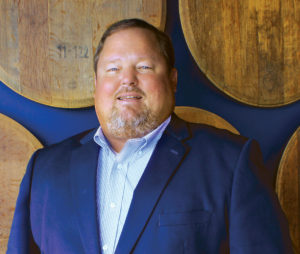
“We saw all the development taking place,” he says. “Channelside Bay Plaza was under construction at the time, the Marriott Waterside had just opened, you had a convention center on the waterfront, you had Ybor City, you had the streetcar under construction, and you had the vision of the Riverwalk that was reenergized. We saw the opportunity.”
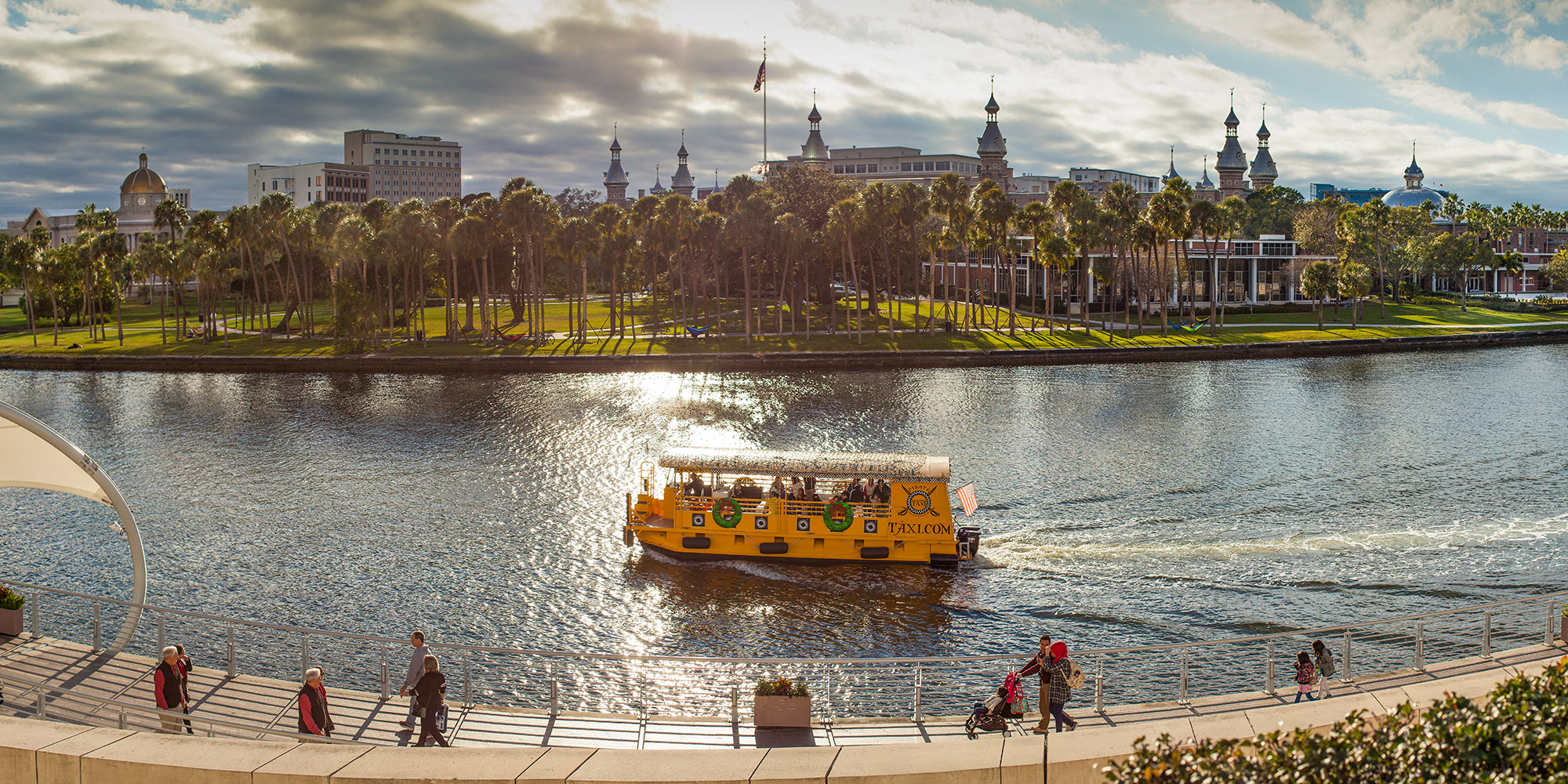
Manthey hung on during Tampa’s tough recession years, eventually launching the downtown Pirate Water Taxis in March 2016 after the addition of the Riverwalk’s Tampa Heights segment.
“Without the Riverwalk there is no water taxi, absolutely,” he says. “Our passengers are 50 percent tourists and 50 percent locals. They’re spending money on attractions and restaurants on the Riverwalk, and we’re connecting them in a very fun way on the Pirate Water Taxi.”
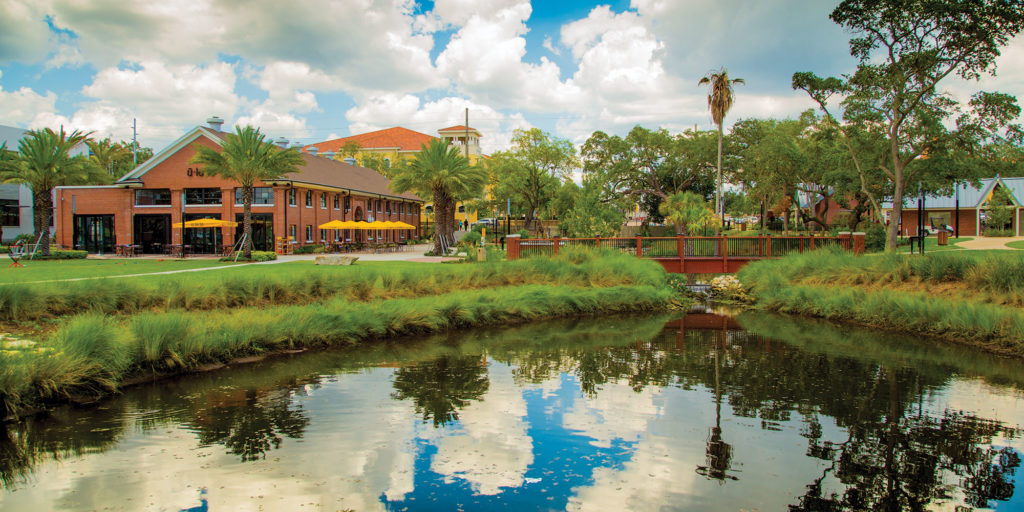
One of the water taxi’s most popular stops is Ulele, a Native American-inspired restaurant owned by restaurateur Richard Gonzmart’s Columbia Restaurant Group, located in Tampa Heights on the Riverwalk’s north end. Andrea Gonzmart Williams, his daughter and a fifth-generation owner of the group, says her family is pleased that Ulele and their Columbia Café, located on the Riverwalk’s south end, are giving people more choices along the path.
“To be the anchor of both ends is super exciting,” she says. “The Riverwalk has given citizens another great livable space in Tampa, and it’s getting them to the heart of Tampa, which is downtown.”
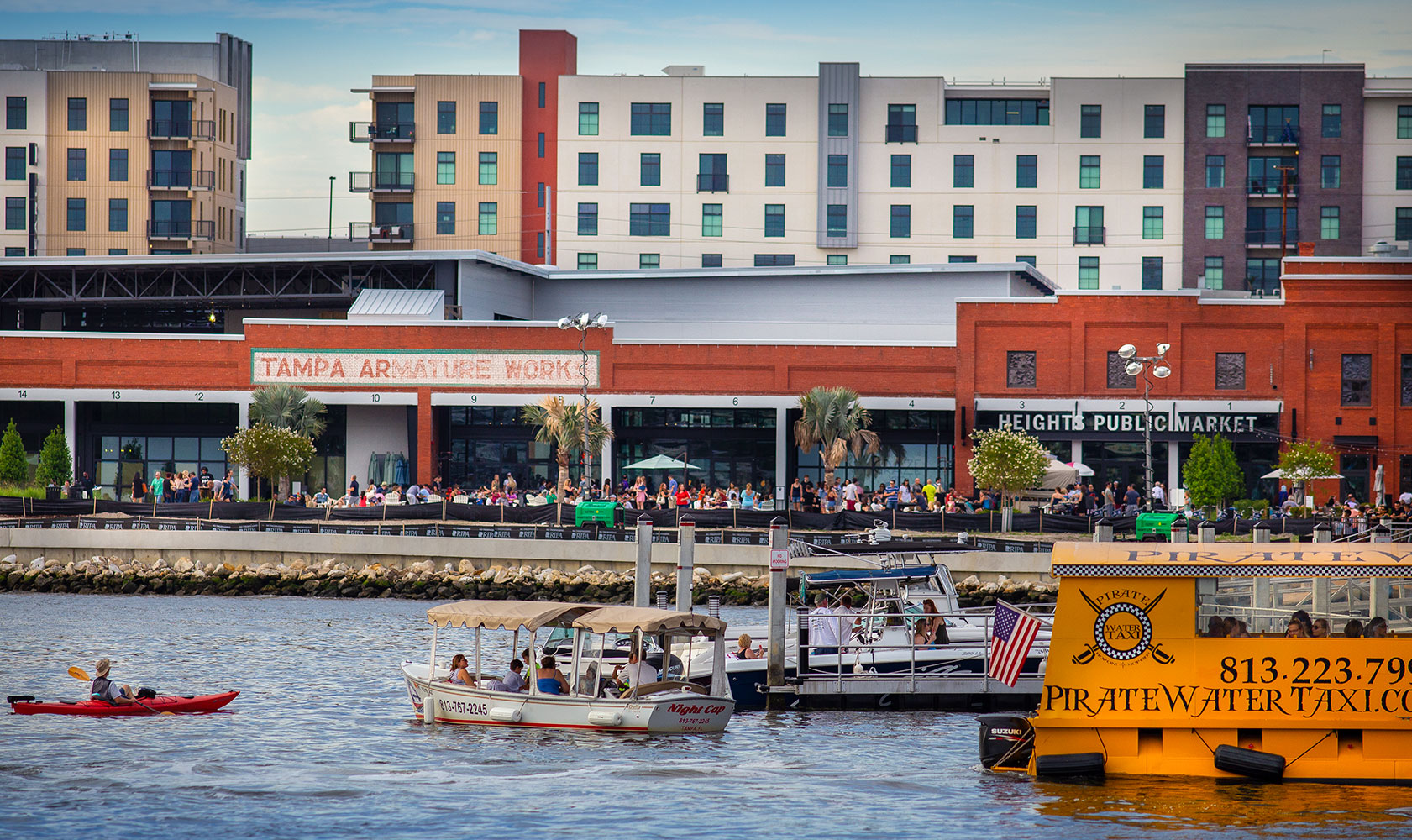
It’s also getting them to the city’s newest developments, like Strategic Property Partners’ Water Street Tampa project around Amalie Arena and the Channel District, Two Roads Development’s Riverwalk Place on the former Trump Tower site, the mixed-use Armature Works in Tampa Heights, and Related Group’s Manor Riverwalk, a 400-unit luxury apartment building on the old Tampa Tribune site.
Related Group’s vice president and development manager, Arturo Peña, says the Riverwalk was a big reason the company spent $17.75 million for the old Tampa Tribune’s waterfront location in 2015. “It was huge,” he says. “When we walked on it (The Riverwalk) with the CEO of our division and [Related Group chairman, president and CEO] Jorge Pérez, we knew we had to have the site.”
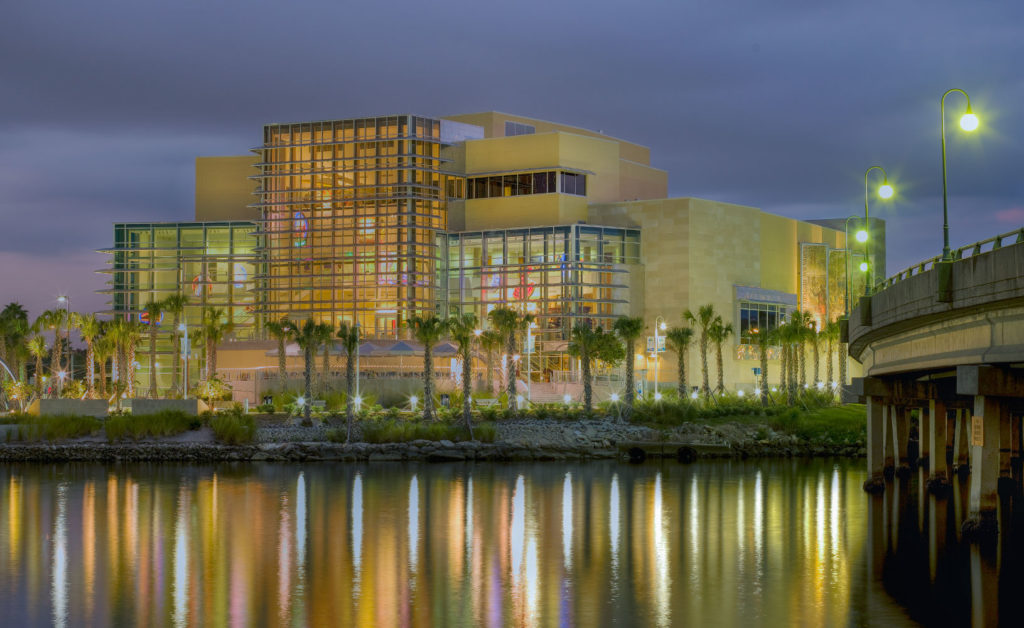
“More people want to live downtown where they can wake up in the morning and go down to the river and take a walk,” says former Mayor Pam Iorio.
The city of Tampa’s Bob McDonaugh says the waterfront path was a “deciding” factor for the placement of the Riverwalk Place office and apartment building, as well as real estate development firm SoHo Capital’s decision to fund the Armature Works project, and the choice of location for Richard Gonzmart’s Ulele restaurant, all along the Hillsborough River.
“That represents [close to] $300 million worth of investment right there, along the Riverwalk,” McDonaugh says. “The waterfront knits our downtown and Tampa Heights together and connects the dots.”
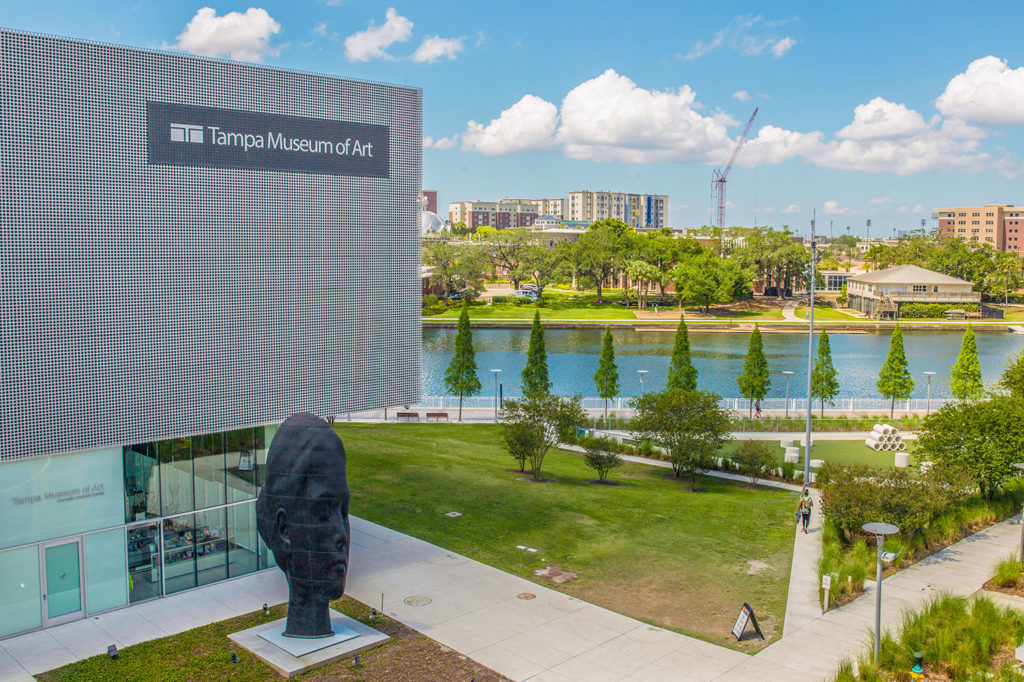
Large National Events In Downtown Tampa
While he can’t definitively say any specific investment would not have been made without the Riverwalk, Mayor Buckhorn does believe Tampa likely secured the 2017 College Football National Championship on the strength of the having that asset. The reason? It connected events at the Tampa Convention Center, Amalie Arena and Curtis Hixon Waterfront Park to places like Ulele for the first time.
“The Riverwalk played a big part in that because it was the first major event we’ve hosted since it was completed,” he says. “I think it was the first time the world, and even people here, woke up and said, ‘wow.’”

“When you’re down at Curtis Hixon Park with 10,000 people and Usher is being projected on the Sykes Building, even native Tampanians said, ‘this is our city?’” he adds with a laugh. “It’s public investments [like the Riverwalk] that we make that trigger much bigger private dollars.”
The Yacht StarShip’s Manthey believes those dollars will be the walkway’s lasting legacy. “I think less than 10 percent of the investment happening now would have happened without the Riverwalk,” he says. “That’s how much of an impact I think it has made on private individuals to invest.”
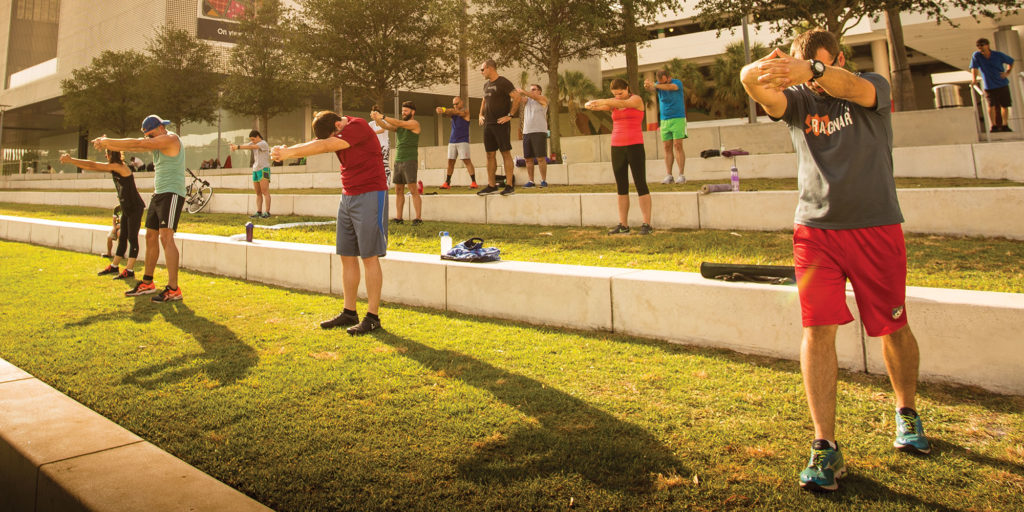
Attracting And Keeping Talented Young People
According to the people most involved, the Riverwalk has helped draw another asset to Tampa: millennials.
“We have been successful – the way we were not in the past – with keeping millennials in our market in recent years,” says the city’s McDonaugh. “People came to the University of Tampa and (then) went back to their hometowns. But now there’s a synergy between being able to keep those young graduates here in our community and being able to attract high-paying jobs.”
Per statistics from the Tampa Hillsborough Economic Development Corporation, as of January 2016, millennials made up a full quarter of Hillsborough County’s population. A 2017 report by the real estate firm CBRE found that the number of 20-something millennials in the city of Tampa has grown by 6.3 percent since 2010, up from the U.S. national average of 4.6 percent, thanks in part to a plethora of local technology jobs.
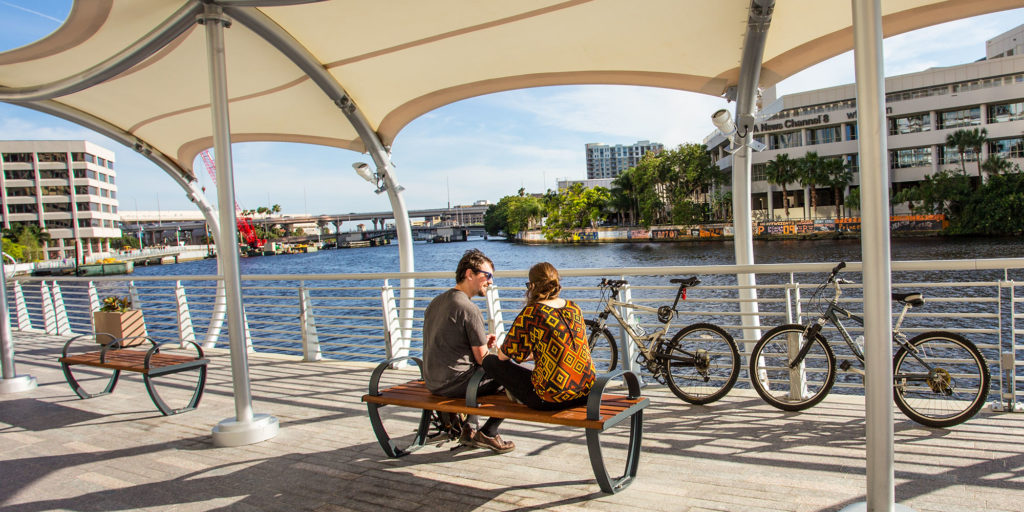
While young professionals still primarily reside outside the urban core, the 2017 biennial downtown study — a collaboration between the Tampa Downtown Partnership and the research firm HCP — found that individuals under 35 make up 25 percent of downtown’s resident population and 20 percent of its workforce.
McDonaugh says the Riverwalk has helped create an attractive environment to recruit and retain young people, while also serving as a major selling point for residents looking to cut down on driving by walking or biking around town.
Millennials’ intense focus on health and wellness, which Jeff Vinik called the generation’s “biggest social trend” in a 2016 interview with TAMPA Magazine, has played a big role in the Riverwalk’s success. According to Vinik, it is also part of the reason that Strategic Property Partners — a joint venture between himself and Cascade Investment, LLC — will make their Water Street Tampa development the first WELL Certified district in the world, a potential key for companies looking to attract top young talent.
“Young people are flocking back to the city,” Buckhorn adds. “It’s palpable, in terms of the energy. When I walk around downtown, I see all the young people out there, and that’s exactly the demographic that’s going to propel us moving forward.”
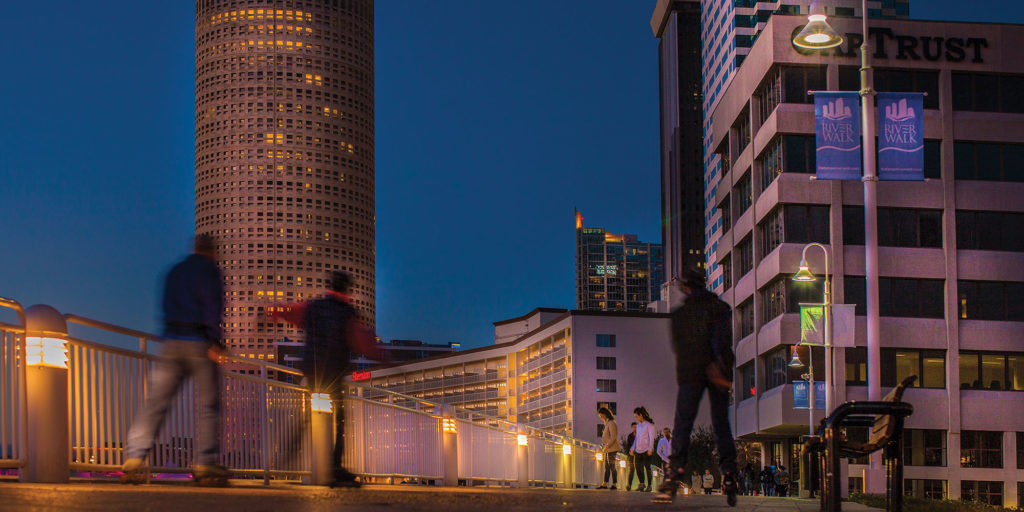
Future Expansion Of The Riverwalk
Over the next few years, both northward and westward Riverwalk expansions are expected, with some pieces already in the planning and construction phases. The northern extension is planned to reach further into Tampa Heights, potentially all the way to Columbus Drive. The western path will be a bit simpler than the original, with the city and the private sector partnering to piece together the waterfront walkways that exist or are mandated on all current and future land developments along the west riverbank.
“I see the Riverwalk continuing to expand down the west side of the river and that being turned into some very prime real estate and some really beautiful developments,” says the Yacht StarShip’s Manthey, who plans to expand the Pirate Water Taxi by running more boats each day, including new boats with protection from the elements.
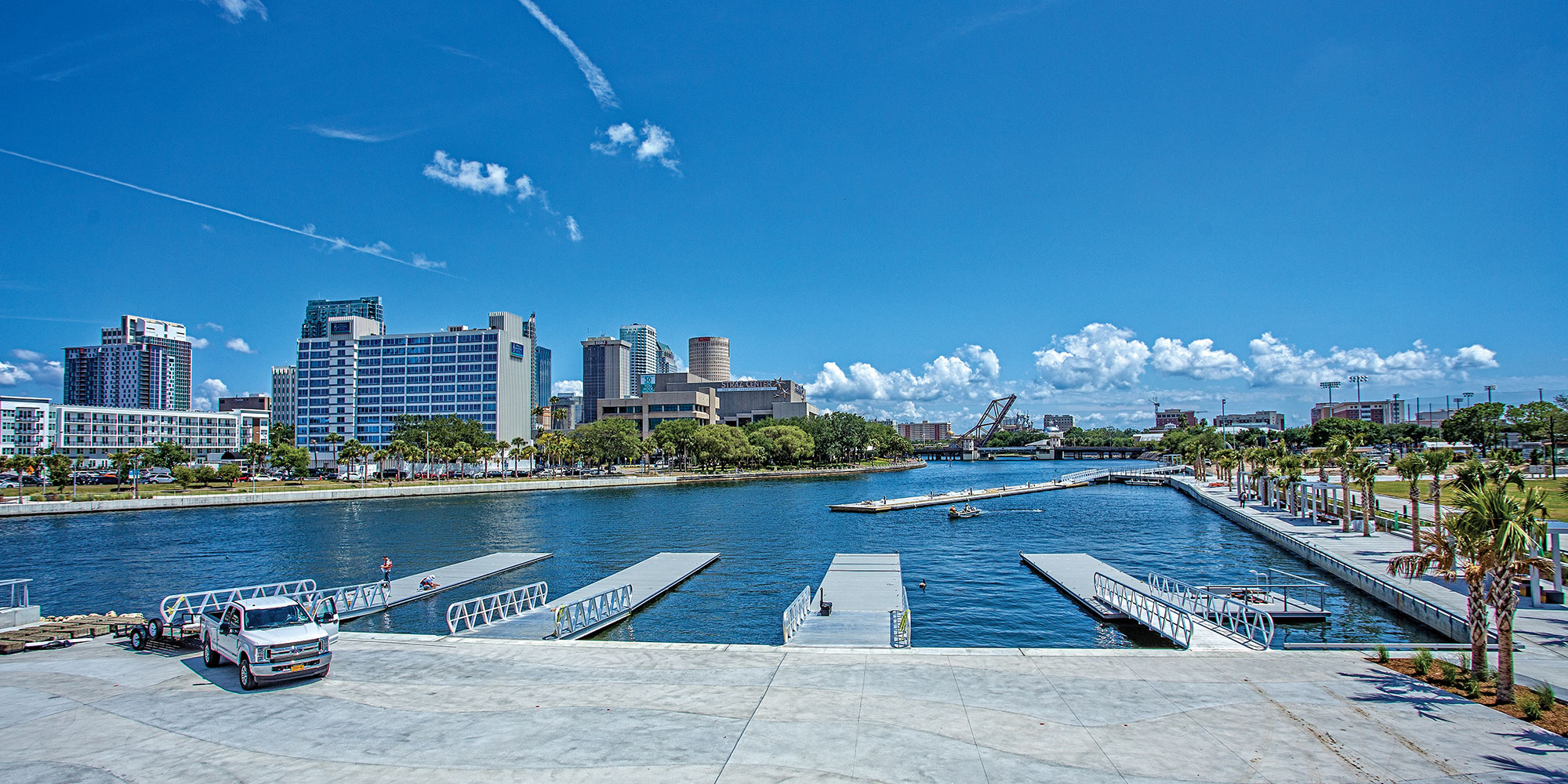
Curtis Hixon Waterfront Park’s west river counterpart will be a reimagined Julian B. Lane Riverfront Park, which sits next to Tampa Preparatory Academy and is scheduled to open in late spring. [Editor’s note: The park opened in May 2018, see photo above.] The Riverwalk will run directly in front of the park’s waterfront community center, complete with boat docks and a second-floor event space with what Buckhorn calls the city’s best view of the Tampa skyline. He envisions the park doing for the west side of the Hillsborough River what Curtis Hixon Waterfront Park helped do for the east side.
“Riverfront Park will, I think, lead to massive redevelopment of the North Hyde Park area,” Buckhorn says.
“Then the benefit is sales tax and property tax.”
Ultimately, Riverwalk stakeholders plan to connect the east and west sides via an overwater portion underneath the Brorein Street bridge, next to the Manor Riverwalk site and just north of the Tampa Convention Center. Arturo Peña, whose Related Group developed Manor Riverwalk, says the connection may take some time, but there will be a temporary workaround.
“The intention is to create a continuous loop,” Peña says. “[In the meantime], we created an easement that cuts back west along Brorein Street so people can cross at the traffic light here and continue on to the Riverwalk.”

Just as Tampa residents are now looking forward to enjoying a bigger, better Riverwalk, former Mayor Iorio says that same desire for access to the city’s waters a decade ago helped make it happen in the first place.
“People wanted the Riverwalk before it happened,” she says. “That’s why it exists today. People were eager to work with our administration to get it done. Most people really did see this as something that was going to be a positive for our city and the broader region, even.”
Buckhorn says that foresight was spot on.
“There’s a different energy and pulse about our city,” Buckhorn says. “When people come down here, they see what Tampa’s next chapter is going to look like. That, to me, is what’s most exciting.”
Editor’s note: This story was updated on March 16, 2020, to reflect a change in the developer of Riverwalk Place.


